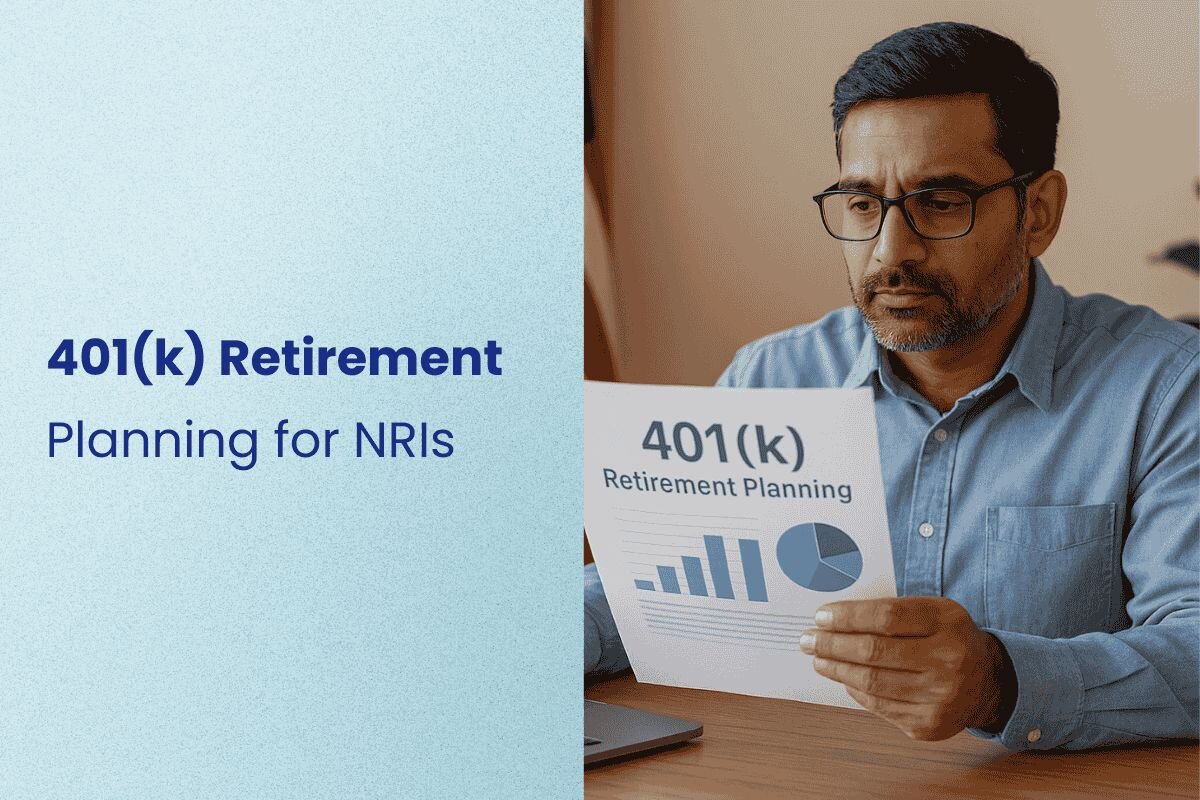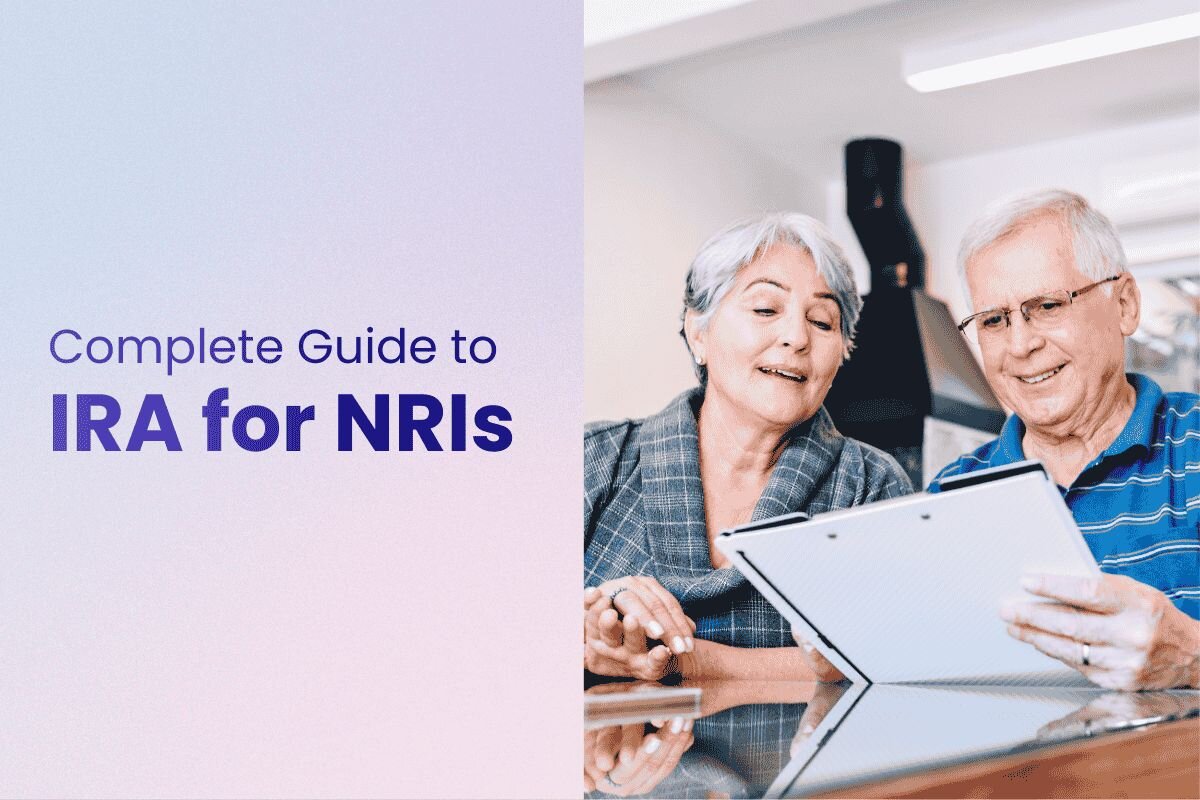Are you paying tax twice on the same income?
As an NRI, India’s Double Taxation Avoidance Agreements (DTAAs) with 90+ countries can save you thousands. For example, interest income that’s usually taxed at 30% in India can drop to 15% under the India-US DTAA or 10% under the India-UAE DTAA.
With the right documents - like your Tax Residency Certificate (TRC) and Form 10F - you can avoid unnecessary taxes on income from salary, property, dividends, or capital gains. This guide walks you through simple steps to claim DTAA benefits and keep more of your money.
Key Takeaway
DTAA (Double Taxation Avoidance Agreement) can save NRIs thousands every year - but only if claimed properly. Here’s what you’ll learn in this guide:
- How DTAA prevents paying tax twice on the same income
- Key documents you must have: TRC, Form 10F, and self-declaration
- Tax-saving methods: Exemption, Tax Credit, and Deduction
- Common mistakes NRIs make (and how to avoid them)
- Step-by-step process to claim DTAA benefits confidently
What is DTAA?
DTAA (Double Taxation Avoidance Agreement) is a tax treaty signed between two countries that ensures you don’t end up paying tax on the same income twice.
When you earn income in India - say from property rent, interest on deposits, or dividends - India naturally has the right to tax that income.
At the same time, the country where you live may also consider you liable to pay tax on the same earnings because you are a resident there. This is where DTAA steps in and saves you.
Think of DTAA as a financial shield: it defines which country has the primary right to tax a certain type of income, and how the other country should provide relief - either by exempting you or by allowing a tax credit.
India currently has DTAA treaties with over 90 countries, including major destinations like the USA, UK, UAE, Canada, Australia, and Singapore.
That means, depending on where you live, you can rely on the agreement to protect you from double taxation on income earned in India.
Why DTAA Is Important for NRIs
As an NRI, your sources of income are seldom limited to a single country. You might be receiving a salary in your country of residence while also earning income in India through investments, rental properties, or savings.
In the absence of DTAA, both India and your country of residence could impose taxes on the same income, resulting in a reduced share of your earnings.
Your income is subject to double taxation when you earn money in India while residing abroad.
This situation arises when identical income is taxed by two separate jurisdictions: the source country where the income is generated and your country of residence for tax purposes.
For example, an NRI employed in the United Kingdom who earns rental income from property in India may be liable to pay taxes in both nations on that income.
This dual tax obligation diminishes your net earnings and imposes unnecessary financial pressure.
Without effective tax planning, you could forfeit a significant portion of your hard-earned income to various tax authorities.
This tax inefficiency deters cross-border investments and economic activities that could be advantageous for both countries.
Purpose of the Double Taxation Avoidance Agreement
Double Taxation Avoidance Agreement (DTAA) is a bilateral treaty between two countries that eliminates the issue of double taxation. These agreements set clear guidelines about which country can tax specific types of income.
The main goals of DTAAs include:
- Preventing dual taxation: DTAAs fairly divide taxing rights between countries to avoid double taxation
- Promoting economic collaboration: These agreements encourage cross-border trade, investment, and economic activities by reducing tax barriers.
- Enhancing tax certainty: DTAAs bring clarity to taxpayers and tax authorities in international dealings.
- Preventing fiscal evasion: Information sharing provisions help reduce tax evasion.
- Protecting taxpayer interests: These agreements prevent discrimination between taxpayers internationally.
Tax credits or exemptions make this possible. Countries grant credit for taxes paid in the other country, which reduces the overall tax burden.
Some incomes might be completely tax-exempt in one country based on specific DTAA provisions.
List of countries having DTAA with India
India's network of tax treaties ranks among the world's largest, with over 94 detailed DTAAs and eight limited DTAAs. This makes India attractive to international investors and gives NRIs valuable tax planning opportunities.
India has signed DTAAs with these major countries:
DTAA Countries and Withholding Tax Rates (2025)
| Country | Dividend Rate | Interest Rate | Royalty Rate | Fees for Technical Services Rate |
|---|---|---|---|---|
| Albania | 10% | 10% | 10% | 10% |
| Armenia | 10% | 10% | 10% | 10% |
| Australia | 15% | 15% | 10%/15% | Not specified |
| Austria | 10% | 10% | 10% | 10% |
| Bangladesh | 10% (if ≥10% shareholding) / 15% | 10% | 10% | Not specified |
| Belarus | 10% (if ≥25% shareholding) / 15% | 15% | 15% | Not specified |
| Belgium | 15% | 15% (10% if loan granted by a bank) | 10% | 10% |
| Botswana | 7.5% (if ≥25% shareholding) / 10% | 10% | 10% | 10% |
| Brazil | 15% | 15% | 15% (for use of trademark) / 25% (for others) | Not specified |
| Canada | 15% (if ≥10% shareholding) / 25% | 15% | 10%-20% | 10%-20% |
| China | 10% | 10% | 10% | 10% |
| France | 10% | 10% | 10% | 10% |
| Germany | 10% | 10% | 10% | 10% |
| Hong Kong | 10% | 10% | 10% | 10% |
| Israel | 10% | 10% | 10% | 10% |
| Japan | 10% | 10% | 10% | 10% |
| Luxembourg | 10% | 10% | 10% | 10% |
| Mauritius | 7.5% | 10% | 10% | 10% |
| Netherlands | 10% | 10% | 10% | 10% |
| Singapore | 15% | 15% | 10% | 10% |
| United Kingdom | 10% | 10% | 10% | 10% |
| United States | 25% (if ≥10% shareholding) / 15% | 15% | 15% | 15% |
For a comprehensive list of countries and detailed provisions, you can refer to the official Income Tax Department's DTAA page
Types of Income Covered Under DTAA
DTAAs include many income sources that NRIs typically earn from India. Learning about which income types qualify under these agreements will help you plan your finances better and reduce your tax burden in different countries.
1) Salary Income
Your salary income falls under DTAA protection if you work temporarily in India while being a tax resident of another country.
The India-US DTAA serves as a good example.
Let's say an Indian company sends you to work in the US for three years with a salary of ₹50,00,000 in India.
You can claim complete exemption from Indian income tax under the "Dependent Personal Services" category.
Other agreements also help you avoid paying tax twice on your employment income by clearly stating which country gets to tax first.
2) Interest and dividend income
Indian bank accounts and companies provide interest and dividend income that gets special treatment under DTAAs. Interest from NRE and FCNR accounts doesn't get taxed in India. However, NRO accounts face full taxation.
Most DTAA agreements reduce dividend tax rates compared to domestic rates. The India-US DTAA taxes dividends at 15% if the company owns at least 10% of the voting stock.
Other cases face a 25% tax rate. The India-Canada DTAA keeps dividend tax at 15% if the recipient holds at least 10% of shares.
3) Capital gains and rental income
Many NRIs earn money by selling assets in India. While domestic laws usually tax capital gains, DTAAs tell you which country can tax this income.
US residents selling property in India pay tax only in India under the India-US DTAA.
4) Rental Income from Property in India
NRI landlords get substantial tax benefits under DTAAs. These benefits include:
- A standard deduction of 30% on Net Annual Value
- Complete deduction of municipal taxes paid in the financial year
- Interest deduction up to ₹2 lakh yearly for self-occupied property under Section 24(b)
- Full interest deduction for rented properties
India mainly taxes rental income under most DTAAs. Tenants must deduct 31.2% TDS when paying rent to NRIs.
However, DTAA rules can lower this rate. The India-US DTAA reduces it to 15%, while UAE or Mauritius agreements offer rates between 7.50% to 15%.
5) Capital Gains
The holding period determines how capital gains get taxed:
- Short-Term Capital Gains (STCG): Property sold within 24 months faces 30% tax
- Long-Term Capital Gains (LTCG): Sales after 24 months get taxed at 20.8% (including health and education cess) with indexation benefits
Here's a simple example: An NRI sells property for ₹1 crore after three years. If the taxable gain after indexation is ₹40 lakhs, they'll pay ₹8 lakhs in tax (20% of ₹40 lakhs).
6) Royalties and Fees for Technical Services
NRIs earning royalties and technical service fees from India get better rates under most DTAAs. The India-US DTAA offers these tax rates:
- 10% for equipment rental and technical know-how services
- 15% for payments from Indian government or specific organizations (first five years)
- 20% for other cases in the first five years, dropping to 15% later
The India-UK DTAA gives good rates for royalties too. It charges 10% for using industrial, commercial, or scientific equipment.
How to Check If DTAA Applies to You
Three key factors decide if DTAA benefits apply to your case. Your residential status, a tax treaty between India and your country, and the tax rates in that agreement all play crucial roles.
1) Determine your residential status
Your tax benefits depend on your residential status. Indian Income Tax law puts individuals into three groups: Resident and Ordinarily Resident (ROR), Resident but Not Ordinarily Resident (RNOR), or Non-Resident (NR).
You qualify as a non-resident by meeting one of these rules:
- Your stay in India is less than 182 days in the financial year
- You stay less than 60 days in the financial year AND less than 365 days in the preceding four years
Indian citizens or Persons of Indian Origin (PIOs) get an extended 182-day period instead of 60 days. This changes to 120 days if your Indian income goes beyond ₹15 lakh during the previous year.
Your residential status shapes your tax liability. Non-residents pay tax only on their Indian income. Residents, however, might need to pay tax on their worldwide income.
2) Understand the applicable tax rates
Tax rates differ between agreements and income types. You should know which rates apply to your income.
Start by finding your tax liability under Indian law. Next, check what you'd pay under the DTAA. Pick the better option - this is called "Treaty Override" under section 90(2).
The Indo-US DTAA sets these rates:
- Dividends: 15% for companies with 10% voting stock ownership; 25% for others
- Interest: 10% on bank loans; 15% for other cases
- Royalties and technical services: 10-15% based on service type
The non-resident party's status determines which DTAA applies. Take Smriti's case - she lives in Canada and has an NRO savings account in India.
As Canada's tax resident, she follows the India-Canada agreement instead of regular Indian rates.
Note that having a Permanent Establishment (PE) in India means normal tax rules apply, not reduced rates. The treaty's rules beat Indian tax laws when they clash.
Step-by-Step Process to Claim DTAA Benefits
You need a systematic process and proper documentation to claim DTAA benefits. These five significant steps will help you avoid double taxation and get the tax advantages you deserve after you confirm your eligibility.
1) Get a Tax Residency Certificate (TRC)
A Tax Residency Certificate proves your tax residency status and is the life-blood of your DTAA claim.
The tax authority of your country of residence - not Indian authorities -must issue this certificate.
Here's how to get a TRC:
- Check if you qualify based on your physical presence, how long you stayed, and your main interests in your residence country
- Collect documents like your passport copy, recent tax returns, proof where you live, and Tax Identification Number (TIN)
- Send your application to your country's tax authority (Form 8802 if you live in the US)
- The process takes about 45 days - plan ahead
US residents will get Form 6166 as their TRC, printed on US Department of Treasury letterhead.
Your TRC stays valid until the end of the financial year from when it was issued, so plan when you'll need to renew it.
2) File Form 10F on the income tax portal
The electronic submission of Form 10F became mandatory in April 2023 if you want DTAA benefits.
This self-declaration form adds to your TRC, especially when your certificate misses certain details.
You need these details for Form 10F:
- Your status (individual, company, firm)
- PAN (Permanent Account Number) or Aadhaar
- Nationality or country of incorporation
- Tax Identification Number in your residence country
- Period of residential status
- Your address in your residence country
Non-residents can now sign up on the Income Tax Portal without a PAN.
They can file Form 10F electronically with simple details and OTP verification.
You might lose your DTAA benefits and become an "assessee in default" if you don't submit this form.
3) Submit self-declaration and supporting documents
You'll need more documents besides your TRC and Form 10F:
- Proof of income and tax paid abroad
- Self-declaration or indemnity forms
- PAN card copy (if you have one)
- Bank statements showing tax payments
Submit these documents to Indian tax authorities before filing your tax return.
Your DTAA claim might be rejected if your documentation is incomplete, which means higher tax bills.
4) File Your Indian Income Tax Return (ITR)
The right way to file your Indian income tax return matters a lot for DTAA benefits. Your return must have:
- Schedule FSI (Foreign Source of Income): Details about your foreign income and taxes paid overseas
- Schedule TR (Tax Relief): Information about tax relief on money paid outside India
- Schedule FA (Foreign Assets): Details of your foreign assets and income
- Form 67: File this online before your ITR deadline to claim foreign tax credits
Form 67 has four parts: basic information (Part A), refund details (Part B), verification, and attachments where you show proof of foreign tax payment.
5) Claim Foreign Tax Credit (FTC) in Your Resident Country
After you file your Indian tax return, you should claim Foreign Tax Credit where you live:
- Show your Indian income in your resident country's tax return
- Show proof you paid taxes in India
- Ask for tax credit based on your country's tax laws
Let's look at Smriti's case. She lives in Canada and has an NRO savings account in India.
She earned ₹25,00,000 in interest with 31.20% TDS (₹7,80,000). The India-Canada DTAA let her claim a special 15% tax rate.
This got her a 16.2% refund when she filed her ITR in India. She then claimed foreign tax credit in Canada for her Indian taxes.
Good documentation, on-time submission, and accurate reporting will help you claim DTAA benefits. Start your application at least 45 days before you need the certificate. This gives you enough time to fix any issues or meet additional requirements.
Methods to Avoid Double Taxation
Double taxation avoidance agreements help you reduce or eliminate your tax burden through three different methods when you earn money across borders.
Each method gives you different tax benefits based on your situation.
1) Exemption method
The exemption method lets you pay tax in just one country while keeping your income tax-free in the other.
Your income becomes taxable only in your residence country and stays exempt in the source country. This method eliminates dual taxation completely instead of just reducing it.
To name just one example, let's say you're an Indian national sent to work in the US for three years by an Indian company.
You become a US tax resident and an NRI in India. Your salary of ₹50,00,000 in India for US-based services qualifies for full exemption from Indian income tax under the "Dependent Personal Services" category of the India-US DTAA. You would then pay income tax only in the USA.
This method works best when your domestic country's tax rates are higher than source country rates.
2) Tax credit method
The tax credit method lets you pay taxes in both countries but gives you credit in your residence country for taxes you've already paid in the source country. This approach works in two ways:
- Ordinary credit: Your home country allows full or partial credit for foreign taxes paid, with the credit limit set at the common domestic tax rate.
- Underlying credit: You get credit for taxes paid on profits that generate dividends, which reduces taxes on dividend income.
Here's a real-world example: Smriti, who lives in Canada as an NRI, earns ₹25,00,000 interest from her NRO savings account in India. The bank deducts TDS at 31.20% (₹7,80,000).
The India-Canada DTAA lets her claim a special 15% tax rate on her Indian tax return, which means she gets a 16.2% refund.
She then claims a foreign tax credit in Canada for her Indian taxes.
3) Deduction method
The deduction method gives you partial relief from double taxation. Your home country lets you deduct foreign government taxes when calculating your taxable income.
Your tax saving equals: Foreign Tax Paid × Domestic Tax Rate
Let's say you pay ₹30,000 in foreign taxes with a 30% domestic tax rate. Your tax saving would be ₹9,000 (₹30,000 × 30%).
Common Mistakes and How to Avoid Them
Many experienced NRIs make mistakes when claiming tax benefits under the double taxation avoidance agreement. They can avoid unexpected tax burdens and penalties by understanding these pitfalls early.
Not getting TRC in time
The Tax Residency Certificate process just needs advance planning.
Getting a TRC takes 4-8 weeks based on your country: UAE (5-10 days), USA (45-60 days), UK (20-30 days), Canada (30-45 days), and Singapore (15-20 days). You should request your TRC at least three months before major interest payments or FD renewals.
Common rejection reasons include:
- Insufficient days spent in resident country (below 183 days)
- Missing supporting documents like salary certificates
- Incorrect application forms
Incorrect or missing Form 10F
NRIs often overlook the mandatory Form 10F submission requirement. Your name and details on Form 10F should exactly match those on your TRC.
PAN details must be accurate since you just need a valid PAN before filing Form 10F online. You should file Form 10F right after getting your TRC - not weeks later.
Failing to declare foreign income properly
NRIs often wrongly believe they don't need to report foreign income in India.
Note that income earned and received outside India doesn't require reporting if you're an NRI.
You must declare income if you're classified as Resident or RNOR, or if you've received foreign income in an Indian bank account.
Conclusion
Understanding and claiming DTAA benefits can save NRIs thousands in unnecessary tax payments by reducing rates from 30% to as low as 10-15% depending on your country of residence.
- Obtain Tax Residency Certificate (TRC) early: Apply at least 3 months before major transactions as processing takes 4-8 weeks depending on your country
- File Form 10F electronically: This mandatory self-declaration form must be submitted on India's tax portal immediately after receiving your TRC
- Choose the optimal relief method: Select between exemption (complete tax relief in one country), tax credit (offset foreign taxes paid), or deduction method based on your situation
- Report income correctly: NRIs must declare Indian-sourced income but not foreign income earned and received outside India
- Plan documentation strategically: Ensure TRC and Form 10F details match exactly, and file Indian ITR with proper schedules (FSI, TR, FA) to claim benefits
DTAA agreements between India and 90+ countries exist specifically to prevent unfair double taxation.
With proper documentation and timely filing, you can significantly reduce your tax burden while remaining compliant across jurisdictions.
Frequently Asked Questions
What is DTAA and how does it benefit NRIs?
DTAA stands for Double Taxation Avoidance Agreement. It benefits NRIs by preventing them from being taxed twice on the same income in both India and their country of residence, potentially reducing tax rates from 30% to as low as 10-15%.
What documents are required to claim DTAA benefits?
The key documents required are a Tax Residency Certificate (TRC) from your country of residence, Form 10F filed electronically on India's income tax portal, and supporting documents like proof of income and tax paid abroad.
How long does it take to obtain a Tax Residency Certificate?
The processing time for a TRC varies by country, typically ranging from 4-8 weeks. It's recommended to apply at least 3 months before you need it to ensure timely receipt.
Can NRIs claim DTAA benefits on all types of income from India?
DTAA benefits can be claimed on various types of income including salary, interest, dividends, capital gains, and rental income. However, the specific provisions and tax rates may vary depending on the agreement between India and your country of residence.
What are the common mistakes to avoid when claiming DTAA benefits?
Common mistakes include not obtaining the TRC in time, incorrectly filling or forgetting to file Form 10F, and failing to properly declare foreign income. It's crucial to plan ahead, ensure accuracy in all documents, and understand your tax reporting obligations as an NRI.
About the Author

By Prakash
CEO & Founder of InvestMates
Prakash is the CEO & Founder of InvestMates, a digital wealth management platform built for the global Indian community. With leadership experience at Microsoft, HCL, and Accenture across multiple countries, he witnessed firsthand challenges of managing cross-border wealth. Drawing from his expertise in engineering, product management, and business leadership, Prakash founded InvestMates to democratize financial planning and make professional wealth management accessible, affordable, and transparent for every global Indian.




